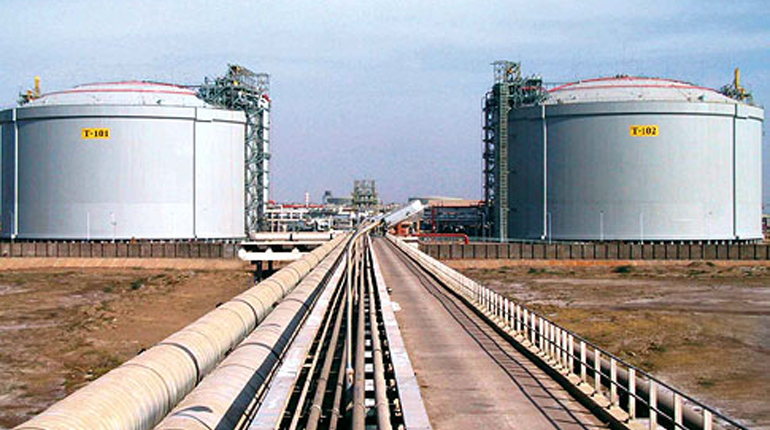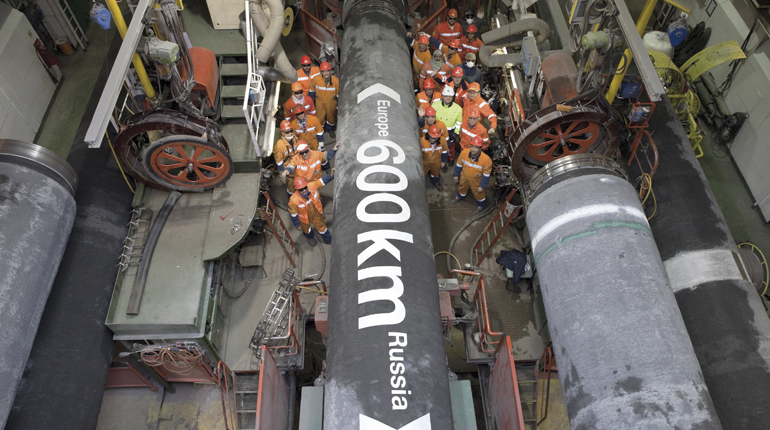Petronet underlines claim as Indian gas aggregator
Petronet LNG is seeking to add to its role as India’s national gas aggregator by taking measures that will help expand the country’s gas industry.
 Petronet’s Kochi LNG terminal. Prabhat Singh says there is huge gas demand potential in India. (Petronet)
Petronet’s Kochi LNG terminal. Prabhat Singh says there is huge gas demand potential in India. (Petronet)
Petronet LNG is seeking to underline its role as India’s gas aggregator by taking measures its chief executive says will help expand the country’s gas industry by harnessing fragmented demand.
Speaking at the CWC World LNG Summit in Rome on Thursday, Prabhat Singh suggested Indian gas demand had been hamstrung by high prices and a lack of necessary infrastructure.
"The issue is how we bring all these potential customers into the picture. So will it be done through an aggregator and what role will it play? I’m saying that, yes, we will play the role of the aggregator," the CEO said.
Singh added he would seek to draw on domestic and international expertise to inform the scheme. He has already commissioned a detailed report on regional demand and has put together a team of experts who are visiting some of the world’s most developed gas markets to identify key contributors in the value chain.
"Rather than reinventing the wheel, we are now looking at where it [aggregation] is being done," said Singh.
The work will be carried out over the next year, and discussions with potential partners are set to start by the time the Indian festival of Diwali draws to a close in November 2016.
Singh said he planned to invite companies to bid for supply on a regional basis, splitting the country into 8-10 areas. Petronet will then partner up on a 50/50 basis with each winner.
"Financing is not an issue. Payments and securitisation are not issues […] We have the government backing also. So if you look [at it as a] complete proposal, I think it’s going to work, because nobody is taking up this role of an aggregator," said Singh.
The aggregator position has become highly sought after in the gas industry. The success of Japan’s JERA – an LNG buying joint venture between Tepco and Chubu Electric – has attracted many to the role.
Other countries have been keen to replicate this success: Indonesia recently unveiled plans for a similar system and both Pertamina and PGN are understood to be lobbying hard to occupy the position.
Infrastructure barrier
Singh was insistent India’s lack of gas infrastructure would not be a long-term barrier to gas demand growth.
"The constraint at the moment is we can’t reach the customer, but there is a huge customer base in India which can be tapped," he said.
Singh’s prediction that the country’s rail sector could consume up to 2.5 mtpa of LNG – infrastructure permitting – is illustrative of India’s considerable potential for demand growth, particularly in the area of small-scale LNG.
However, much will rest on the willingness of players to develop small-scale LNG to a level at which it starts to push out diesel in the transport and agricultural sectors.
The threat of renewables
Much talk at the summit in Rome has centred around the potential for FSRUs to unlock latent gas demand, particularly in South Asia. Such technology appears well suited to India’s needs, and United States FSRU specialist Excelerate Energy has been in discussions with the Indian government about delivering such a vessel, to be moored at Kolkata.
But while Singh is confident gas will be central to India’s energy mix in future, cheap coal and renewables threaten to spoil the party, at least in terms of power generation. New Delhi announced a target of 175 GW of renewable power generation capacity by 2022 earlier this year, of which 100 GW will be solar.
India is now the world’s second-largest market for solar panels, and more than half of the generation capacity it is planning to install by 2040 is projected to come from non-fossil fuels – led by solar and wind power.
Although it is uncertain what form Indian energy demand will take, the market potential is unparalleled in scale. India is likely to contribute "more than any other country to the rise in global energy demand over the next 25 years", the International Energy Agency reported in its India Energy Outlook 2015, published at the end of November.
The country will need to invest more than $140 billion per year to meet its growing energy demand, which has nearly doubled since 2000. Nearly 240 million people in India lack access to electricity, the report said. This is equivalent to one in five Indian citizens.
Liked this article?
Sign up for exclusive, accurate and up-to-date natural gas news, analysis and intelligence, with global coverage of every phase of the gas chain.
By logging in or signing up for a free trial, you are agreeing to our terms and conditions, privacy policy and cookie policy.







